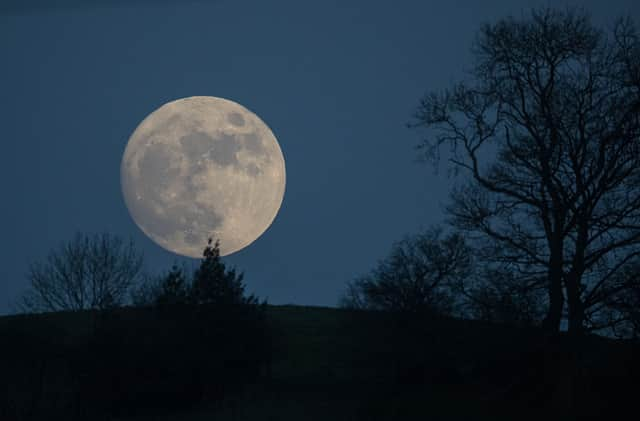A full ‘Wolf Moon’ will appear alongside the lunar eclipse in the UK tonight - here’s how to see it


The start of the New Year has already delivered some spectacular sights for stargazers, with the Quadrantids meteor shower lighting up the skies just a few days ago.
And more bewildering celestial displays are on their way, with January’s full ‘Wolf Moon’ due to coincide with the lunar eclipse tonight (10 Jan).
What is a full ‘Wolf Moon’?


Advertisement
Hide AdAdvertisement
Hide AdThe majority of pre-modern calendars used the moon as the basis for the names of their months - a convention ended by the introduction of the solar Julian and Gregorian calendars.
In modern times, the moons have developed new names - most of which are attributed to Native Americans - which tend to hold particular resonance with the time of year when they fall.
January’s “Wolf Moon” was named by both Europeans and Native Americans because of the lupine howling which haunted the midwinter.
There are three more penumbral lunar eclipse's to come in 2020 (Photo: Shutterstock)
When can I see it?
Advertisement
Hide AdAdvertisement
Hide AdThe full Wolf Moon is expected to be visible this evening (10 Jan) and will be met with a penumbral lunar eclipse.
During a penumbral lunar eclipse, the moon passes through the edges of the 'shadow' that our planet casts into space, in which a portion - but not all - of the sun's light is obscured.
Unlike total lunar eclipses - when the moon passes entirely through the Earth's shadow - the surface of the moon does not appear to turn a reddish tint as seen from Earth.
Instead, the penumbra causes only a subtle dimming of the lunar surface.
Advertisement
Hide AdAdvertisement
Hide AdThe eclipse will be at its greatest point at 7.10pm tonight, and you’ll need a clear night sky to see it.
The eclipse technically takes place over a four-hour period, from around 5.08pm to roughly 9.12pm, so you may be able to see it during this period, although the effects of it will be noticeably less pronounced.
When is the next penumbral eclipse?
Penumbral eclipses aren't particularly rare, and there are three more to come in 2020.
The first falls on 5 June, and will only be visible briefly in the UK at moonrise.
Advertisement
Hide AdAdvertisement
Hide AdThe second comes a month later on 5 July, and will only be visible from the UK at moonset.
The final penumbral eclipse of 2020 falls on 20 November, and will be visible from most of the UK at moonset.